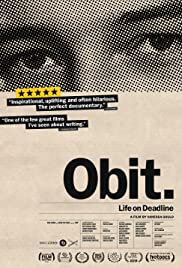
How do you put a life into 500 words? Ask the staff obituary writers at the New York Times. OBIT is a first-ever glimpse into the daily rituals, joys and existential angst of the Times obit writers, as they chronicle life after death on the front lines of history.
You May Also Like

Playwright Arthur Miller, director Volker Schlöndorff and actor Dustin Hoffman are seen creating the Roxbury Productions and Punch Productions teleplay Death of a Salesman (1985).

“The Face of Anonymous” by Gary Lang, which profiles Christopher Doyon, a.k.a. Commander X, who has hidden from the FBI in Toronto and Mexico.

IDFA and Canadian filmmaker Peter Wintonick had a close relationship for decades. He was a hard worker and often far from home, visiting festivals around the world. In 2013, he died after a short illness. His daughter Mira was left behind with a whole lot of questions, and a box full of videotapes that Wintonick shot for his Utopia project. She resolved to investigate what sort of film he envisaged, and to complete it for him.

Brian Wallach was diagnosed with ALS at 37. He and his wife’s fight to reclaim their future from a brutal disease has snowballed into a movement with resounding ramifications not only for the ALS community, but for millions of patients seeking to find their voice in our broken healthcare system.

Several street children in Berlin talk about their daily life, referring not only to drug addiction and physical/traumatic injuries, but also to their talents and dreams.

In 2005, a small group of scientists and filmmakers agreed to leave everything behind for more than a year to sail to the Antarctic and live in isolation. Following in the path of the greatest explorers, expedition leader Jean Lemire and the crew of the Sedna IV dedicated themselves completely to measuring the threat posed by global warming in a place where Earth is particularly vulnerable. The resulting film, is a record of their incredible 430-day journey that inspires equal measures of fear and admiration. Alternating between captivating images of beauty and serenity, and spine-tingling sequences where the ship’s crew finds itself on the edge of catastrophe, this is an expedition where danger and wonder are inextricably linked.

Investigators reveal how Boeing’s alleged priority of profit over safety could have contributed to two catastrophic crashes within months of each other.
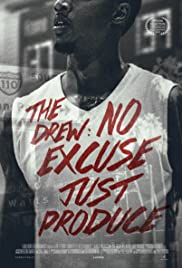
The incredible story of the unlikely rise of The Drew League from humble beginnings in the crime and gang infested streets of South Central Los Angeles to the nation’s foremost pro-am basketball league. Crossing racial, cultural and socioeconomic barriers, The Drew celebrates the value of basketball, persistence, loyalty and above all, community.
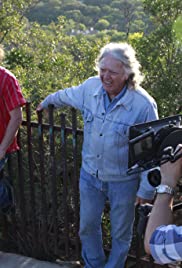
In 1985, former oil rig worker Richard Linklater began a film screening society in Austin, Texas, that aimed to show classic art-house and experimental films to a budding community of cinephiles. Eventually incorporating as a nonprofit, the newly branded Austin Film Society raised enough money to fly in their first out-of-town filmmaker: James Benning. Accepting the invitation, Benning met Linklater and the two began to develop a personal and intellectual bond, leading to many future encounters. Starting in the 1960s, Benning had been creating low budget films mostly on his own, while Linklater had just begun to craft his first shorts. The filmmakers have remained close even as their careers have diverged. After the cult success of Slacker, Linklater went on to make films with Hollywood support. Benning, meanwhile, has stayed close to his roots and is mainly an unknown figure in mainstream film culture.
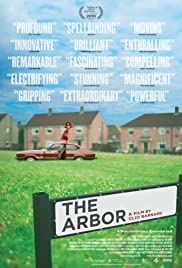
Portrayal of the late Bradford playwright Andrea Dunbar. Andrea Dunbar wrote honestly and unflinchingly about her upbringing on the notorious Buttershaw Estate in Bradford and was described as ‘a genius straight from the slums.’ When she died tragically at the age of 29 in 1990, Lorraine was just ten years old. The Arbor revisits the Buttershaw Estate where Dunbar grew up, thirty years on from her original play, telling the powerful true story of the playwright and her daughter Lorraine. Also aged 29, Lorraine had become ostracised from her mother’s family and was in prison undergoing rehab. Re-introduced to her mother’s plays and letters, the film follows Lorraine’s personal journey as she reflects on her own life and begins to understand the struggles her mother faced.
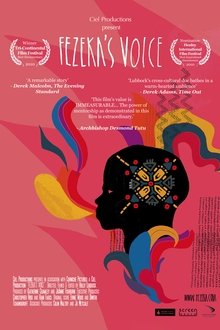
Fezeka’s Voice tells the true story of choirmaster Phumi Tsewu and his unwavering dedication to his township, his school and his choir. For 15 years he has been teaching the children at Fezeka High School in Gugulethu, South Africa – not just how to sing but how to live. Chronicling the highs and lows of their first adventure overseas to perform on a world stage, the film exposes Phumi’s commitment and spirit as he teaches his students everything from manners to Mozart, bringing them focus, pride and joy.